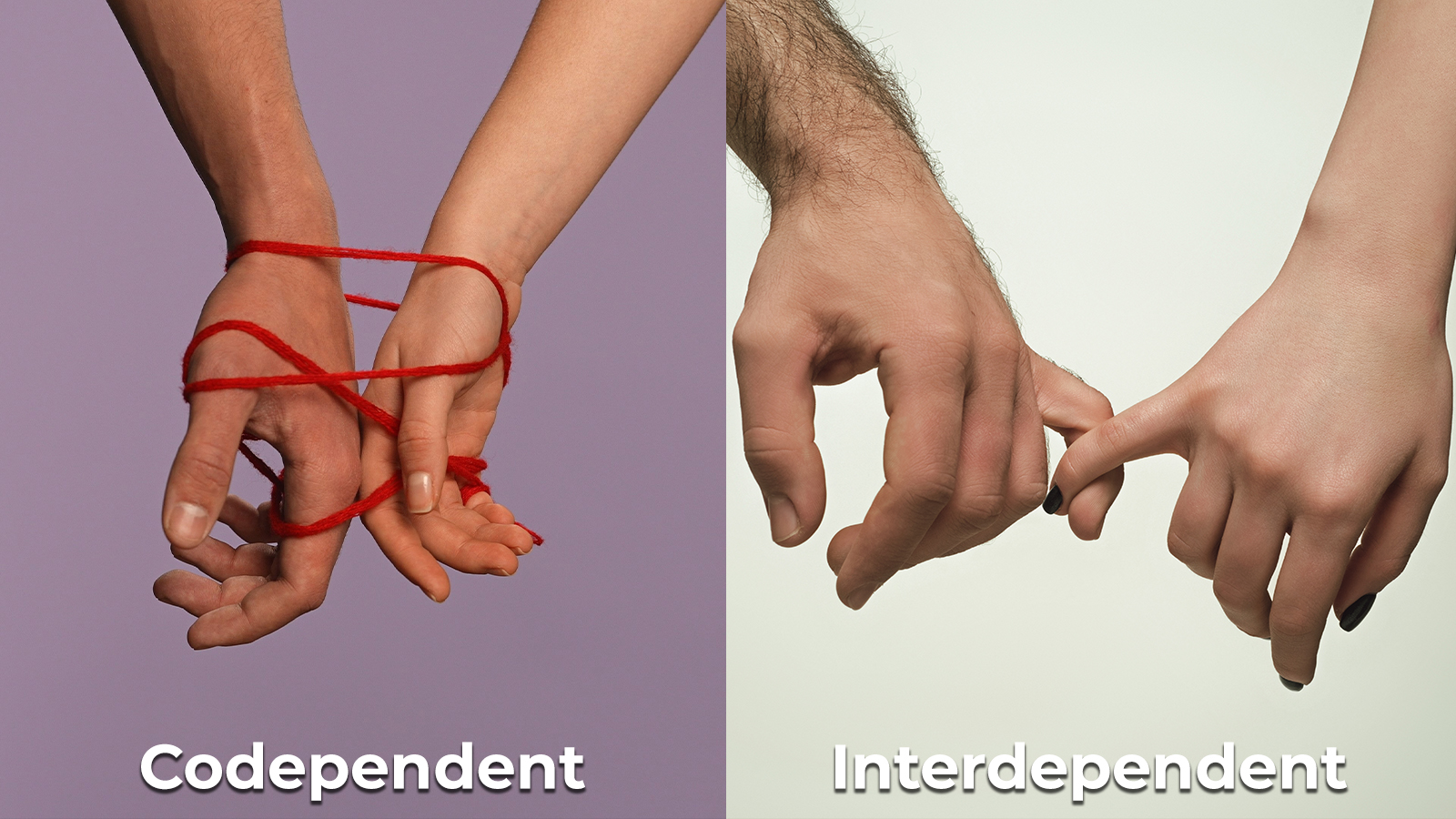
Relationships shape so much of our happiness, but not all patterns lead to healthy connection. By learning the difference between codependency and interdependency, you can start building bonds that feel more balanced, respectful, and fulfilling.
Codependence means needing others too much for approval and self-worth, as Psych Central explains. Interdependence, on the other hand, builds strong, respectful connections between people. Knowing the signs of codependency and the traits of interdependent relationships can help you create better relationships.
Key Takeaways
- Understanding the difference between codependency and interdependence is key for healthy relationships.
- Codependency involves needing others too much for self-worth.
- Interdependence builds mutual respect and trust.
- Spotting codependency signs is the first step to change.
- Shield Bearer Counseling helps you move towards interdependent relationships.
Understanding Relationship Dynamics: Codependency and Interdependence
Your relationship patterns are shaped by many things, like your upbringing and past experiences. It's key to understand these dynamics for a healthy partnership. At Shield Bearer Counseling, we guide you through these complexities to strengthen your bond with your partner.
What Shapes Our Relationship Patterns
Many factors influence our relationship patterns, including family background, past relationships, and attachment styles. These can lead to either healthy or unhealthy patterns. Knowing the roots of your patterns is the first step to change.
For example, those with insecure attachment in early life might struggle with codependency in adult relationships. Understanding these factors helps you tackle the core of your relationship dynamics.
| Factors Influencing Relationship Patterns | Impact on Relationship Dynamics |
| Family Background | Shapes attachment styles and expectations in relationships |
| Past Relationships | Influences trust, intimacy, and conflict resolution strategies |
| Attachment Styles | Affects emotional regulation and responsiveness in relationships |
The Importance of Recognizing Unhealthy Dynamics
It's vital to spot unhealthy dynamics in your relationship to make changes. Codependency, for instance, can make one person's life revolve around the other, neglecting their own needs.
By recognizing these signs, you can start working towards a more balanced and fulfilling relationship instead of an unhealthy relationship.
How Shield Bearer Counseling Approaches Relationship Health
At Shield Bearer Counseling, we focus on helping you identify and challenge negative patterns. We also work on developing healthy communication and emotional intimacy. Our therapists offer a supportive space for you to explore your relationship dynamics.
Through couples and marital counseling, we aim to strengthen your relationship. This way, you can better face life's challenges together.

What Is Codependency? Recognizing the Signs
Recognizing codependency signs is the first step to change. It's a complex issue in many relationships. At Shield Bearer Counseling in Houston, Texas, we help identify codependent behaviors for healthier relationships through marriage counseling and couples counseling.
Definition and Origins of Codependency
Codependency means lacking boundaries, people-pleasing, and needing control. It often comes from low self-esteem, past traumas, or family habits and often a lack of sense of self.
Common Signs You're in a Codependent Relationship
Signs you may be in a codependent relationship include feeling too responsible for others, having trouble setting boundaries, and putting others first. You might also want to control or be controlled by your partner.
The Psychological Impact of Codependent Behaviors
Codependency can cause anxiety, depression, and losing your identity. It's key to recognize these signs for positive change.
| Trait | Healthy Relationship | Codependent Relationship |
| Boundaries | Respected and communicated clearly | Often lacking or ignored |
| Emotional Responsibility | Individuals manage their own emotions | One partner is overly responsible for the other's emotions |
| Decision Making | Collaborative and mutual | One partner dominates or makes decisions for the other |
Knowing these differences helps you see if your relationship is codependent or interdependent.

What Is Interdependence? Characteristics of Healthy Relationships
Understanding interdependence is key to building strong, lasting relationships. These relationships help both people grow and feel better together.
Definition and Foundation of Interdependence
Interdependence means mutual respect, trust, and finding a balance between being alone and together. It's about being connected and supportive, yet keeping your own space.
This balance is the heart of healthy relationships. It lets partners grow on their own and together. By getting interdependence, couples can handle their relationship's challenges better and with more understanding.
Key Elements of Interdependent Relationships
Interdependent relationships have clear boundaries, mutual support, and a way to solve conflicts together. These elements create a space of trust and respect. Here, both partners feel important and heard.
- Clear boundaries that respect individual autonomy
- Mutual support that encourages personal growth
- Effective communication that resolves conflicts
How Interdependence Strengthens Individual Growth
Interdependence makes relationships better and helps individuals grow. By keeping their independence, people can follow their interests and find who they are.
This leads to a more satisfying relationship. Both partners bring their own experiences and views. At Shield Bearer Counseling in Houston, Texas, we guide couples to find this balance. We aim for healthier, stronger relationships.
Codependency vs. Interdependence in Relationships: Key Differences
Knowing the difference between codependent and interdependent relationships can change your relationship for the better.
Boundaries and Personal Space
Boundaries are a big difference between codependent and interdependent relationships. Codependent relationships often lack healthy boundaries. This can make personal growth hard. On the other hand, interdependent relationships respect each other's boundaries. This allows for personal space and freedom.
- Codependent relationships: Lack of boundaries, enmeshment
- Interdependent relationships: Clear boundaries, mutual respect
Decision-Making Processes
Decision-making is another area where codependency and interdependence differ. In codependent relationships, one person might make all the decisions. Or, decisions might be made out of obligation, not agreement. Interdependent relationships, though, make decisions together. This way, both partners' needs and opinions are respected.
| Aspect | Codependent | Interdependent |
| Decision-Making | Dominant or obligatory | Collaborative |
| Boundary Respect | Lack of boundaries | Clear boundaries |
Emotional Responsibility and Support
In codependent relationships, one person might carry too much emotional weight. This can lead to burnout. Or, they might dump all emotional needs on the other. Interdependent relationships, though, share emotional responsibility. Both partners support each other without losing their own emotional health.
- Codependent: Imbalanced emotional responsibility
- Interdependent: Balanced emotional support
Conflict Resolution Approaches
How conflicts are handled also differs. Codependent relationships might avoid conflicts or deal with them aggressively. Interdependent relationships, though, solve problems together. They aim to make their relationship stronger.
- Codependent: Avoidance or aggression
- Interdependent: Collaborative problem-solving
Understanding these differences is key to a better relationship. At Shield Bearer Counseling, our experts help you move from codependency to interdependence. We provide the support you need for a healthier, more fulfilling relationship.

Transitioning from Codependency to Interdependence
Changing to a more balanced partnership means recognizing and changing codependent behaviors. This journey needs self-awareness, commitment, and sometimes, professional help.
Recognizing Codependent Patterns
The first step is to see the codependent patterns in your relationship. It's about understanding how these patterns affect your interactions and happiness.
- Identify enabling behaviors and dependency.
- Assess the impact on your emotional well-being.
- Consider how these patterns influence your conflict resolution strategies.
Practical Steps to Build Healthier Dynamics
To build a healthier relationship, take several practical steps. These steps help create a more interdependent bond.
| Strategy | Description | Benefit |
| Improve Communication | Practice active listening and express your needs clearly. | Enhances understanding and reduces conflict. |
| Set Boundaries | Establish clear limits to maintain personal space. | Promotes respect and reduces resentment. |
| Prioritize Emotional Intimacy | Focus on building a deeper emotional connection. | Strengthens your bond and fosters a sense of security. |
The Role of Professional Support
Professional support, like couples therapy, is key to breaking codependency. Therapists help with better communication, setting boundaries, and dealing with emotions.
At Shield Bearer Counseling, our experienced therapists help you understand your relationship. They guide you in developing strategies for a more interdependent partnership. Couples therapy gives you the tools and support to move from codependency to a healthier, more fulfilling relationship.
Conclusion: Building Balanced Relationships with Shield Bearer Counseling
Building a balanced relationship takes effort and commitment. It's about mutual respect, trust, and emotional closeness. Shield Bearer Counseling in Houston, Texas, helps you achieve this through couples and marital counseling.
Recognizing codependency signs and understanding interdependence are key steps. Our experienced therapists support you in building a more balanced relationship.
Shield Bearer Counseling offers a personalized approach to couples and marital counseling. This helps you develop skills to overcome challenges and strengthen your bond. By focusing on building balanced relationships, you can create a more resilient and fulfilling partnership.
FAQ
What is the main difference between codependency and interdependence in relationships?
Codependency means not having boundaries, always trying to please others, and needing to control. Interdependence, on the other hand, values mutual respect, trust, and finding a balance between being independent and dependent.
How can I recognize if I'm in a codependent relationship?
Signs of codependency include feeling responsible for others' feelings, having trouble setting limits, and putting others' needs before your own.
What are the key elements of an interdependent relationship?
Interdependent relationships have clear boundaries, mutual support, and a readiness to solve conflicts together. They focus on personal growth and deep emotional connection.
Can a codependent relationship become interdependent?
Yes, by wanting to change, learning to communicate better, and valuing emotional closeness, you can move from codependency to interdependence.
How can professional support help in breaking the cycle of codependency?
Couples therapy is key in spotting and changing bad patterns, improving communication, and building emotional closeness. It helps create a more rewarding relationship.
What are the benefits of an interdependent relationship?
Interdependent relationships focus on mutual respect, trust, and emotional closeness. This leads to a more balanced and satisfying partnership.
How can I start building a healthier relationship dynamic?
Begin by spotting codependent behaviors, setting clear limits, and focusing on emotional closeness. Getting professional help can also guide you on this journey.